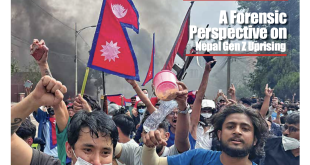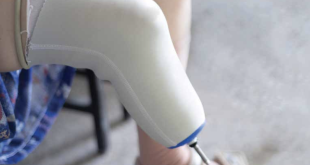Introduction
In general, consumer protection laws are intended to make transactions fair and ensure quality services. However, when it comes to applying them in Nepal’s healthcare sector, it has ignited a debate among doctors. Medical care is fraught with life-and-death decisions and scientific uncertainty, which is nothing like buying consumer goods. A recent case, where a doctor was held liable for not warning a patient about possible future health risks despite no clinical evidence, as shared by Nepali doctors in public forums, highlights challenges with the Consumer Protection Act, 2075 BS, to medical practice. This article explores these issues, based on Nepali doctors’ concerns, the legal framework of Nepal, and international practices, taking reference and understandings from a recent Indian Supreme Court ruling, to propose a judicious strategy that will not only protect patients but at the same time respect the intricacies of medical practice.
The Unique Nature of Medical Practice
Medical services are significantly different from consumer transactions. Despite relying on evidence, patient history, and protocols, doctors encounter unpredictable outcomes due to the complexity of nature of the human body. In one case, a Nepali doctor certified a patient fit for foreign employment after standard tests showed no issues. Later, the patient got asthma abroad and sued the doctor for not warning about possible future health risks. The court ordered the doctor to pay compensation, saying they should have given better guidance. This brings up important concerns:
1. How can doctors be held responsible for conditions that are not obvious during the examination or predictable based on available data?
2. Do doctors have to advise patients about all possible future risks, even without clinical indicators?
3. Can Nepal’s resource-limited health system support comprehensive counselling and laboratory investigations for each patient?
These questions highlight the impractical consideration of medical services as standard consumer goods. Although healthcare are services, it would be impractical to consider them as consumer products. It is not like buying a faulty product because treatment outcomes are hinged on multiple factors such as latent conditions, quality of medications and most importantly the patient compliance to treatment which are not under the doctor’s control.
Nepali Scenario
The Consumer Protection Act (2075) of the Nepali legislature considers healthcare as a service provided and thereby patients as service consumers. This opened a door for health service seekers to file a complaint if they believed the service they paid for was compromised and could seek compensation through consumer courts. The irony is that these courts often lack medical expertise because they primarily handle disputes over goods and services. In the absence of medical expertise for an unbiased expert opinion in complicated medical issues, the verdicts made on emotional appeals would be unfair. For example, in the asthma case, a doctor was fined heavily for not predicting a condition that had no history of the disease or abnormal test results, even though the protocols were fully implemented. Such rulings could result in millions of rupees being awarded as compensation for nominal service fees, which is disproportionate and an annoyance for medical service providers. This can risk oversimplifying complex medical issues and driving distrust, which will further encourage defensive practices such as over-testing or over-referral. In the long run, this will strain both providers and patients.
India’s Consumer Protection Act of 2019 classifies medical professionals as providing a “service,” as per the Indian Medical Association v. V.P. Shantha (1995) ruling, which allows patients to file complaints for deficient services. However, the 2024 Bar of Indian Lawyers v. D.K. Gandhi ruling excluded lawyers from the CPA, arguing that professionals shouldn’t fall under consumer laws, and urged re-evaluation of medical inclusion. India’s Consumer Disputes Redressal Commissions offer quick, cost-effective resolutions, while the State Medical Councils under the National Medical Commission Act handle negligence cases, focusing on disciplinary actions rather than compensation, although their powers vary. Nepal lacks such a specialized mechanism. Nepal Medical Council (NMC) focuses on disciplinary actions such as license suspension, not compensation. This leaves patients to pursue slow, costly civil litigation or rely on consumer courts that are ill-equipped for complex medical cases.
International Practices: Lessons from the EU and India
The D.K. Gandhi ruling in India cited EU Directive 2011/83/EU, which exempts regulated professions from consumer protection laws due to their need for specific regulations. To address this exclusion, EU countries have created a robust, patient-centric system for resolving medical disputes, which Nepal could learn from:
• Netherlands: The Healthcare Quality, Complaints and Disputes Act mandates providers to establish complaint procedures with independent advisors, resolving disputes within six months through recognized committees.
• Finland: The Patient Insurance Act provides compensation (within three months) for injuries caused by negligence or defective equipment and provides free legal assistance. You can appeal these decisions to specialized boards.
• Denmark: The Danish Patient Compensation Programme entirely and absolutely avoids the costs of litigation, resolves claims for system-related injuries and provides payments within nine months. You can appeal to a dedicated board.
• Norway: The Norwegian System of Patient Injury Compensation is a public agency that will handle your claim; will not charge you for their work, and their investigations are conducted with the help of experts. The decision in these boards can be appealed to a specialized board.
Each of these systems has a function that could be a models for Nepal. If Nepal designed a more specialized, expert-driven mechanism compared to the consumer courts, perhaps it could provide higher quality dispute resolution for patients given its limited resources.
Doctors’ Concerns and the Call for Dialogue
The protests of Nepali doctors are not acts of insubordination, but rather appeals directed towards achieving an equitable system. One example that typifies the struggles is a gynecologist’s account of managing an emergency cesarean section: mid-night orchestration of emergency cesarean section requires organizing countless factors including provision of supplies, financial support to procure essential surgical materials, and concurrent saving of mother and child. Courts, on the other hand, seek developed-world benchmarks in under-resource settings as ours. For example, the asthma case ruling would encourage defensive medicine where physicians are compelled to practice assuming the worst for the simplest ailments, which in context to Nepal would mean providing endless costly tests for fevers or admitting patients with benign injuries. The harsh reality is most of the population cannot afford such extravagant care. The prevailing message from the Nepal Medical Association highlighted these concerns, emphasizing the need for expert input in judicial processes.
Instituted systems of checks and balances should be embraced, and revolve around a singular goal of improving surgical outcomes, while focusing on respecting the multifaceted nature of medicine which in turn allows a seamless morph into healthcare. Frustration seems to be the only solution when dialogue remains absent, further pushing doctors to evolve their protests into something other than written petitions and sit down negotiations. Doctors are fleeing the country in droves, further aggravating Nepal’s healthcare crisis. The doctor’s commitment to their profession means facing unbearable consequences.
Proposed Solutions
In order to balance consumer protection and medical realities, Nepal needs a specialized structure that gets informed by the practices used/recognized internationally:
1. Establish a Medical Tribunal: Establish a unique tribunal under the Nepal Medical Council consisting of medical experts, legal representatives, and representatives who will act independently to hear negligence cases and make decisions based on clinical standards and realities.
2. Mandate Expert Evaluation: Require consumer courts refer to medical ethics boards or committees for an expert opinion before they render a decision, to ensure that what they find negligence, and cases they will accept as cases of negligence, are actually based in science to be able to distinguish the difference between negligence and unavoidable complications.
3. Set Realistic Compensation Standards: Clearly define the way we should value-set compensation; valuations should be indexed to the economy as the rates are not arbitrary, they are demoralizing to providers and appropriate; relative to the economy; to avoid bankrupting the system.
4. Strengthen Healthcare Infrastructure: Develop diagnostic equipment, monitor medicine quality, and recruit staff to ensure reasonable care is provided.
5. Foster Dialogue and Awareness: Foster discussion with the Nepal Medical Association on policies and provide public outreach regarding uncertainty in medical practice.
Conclusion
Consumer protection in the health sector in Nepal is important but present recourse to consumer courts risks injustice by being oblivious of medical complexities. International models, such as EU tribunals and India’s emergent framework make clear the necessity of expert-driven, specialized systems. Through developing a medical tribunal under the Nepal Medical Council, with mandatory expert evaluations, setting realistic compensation standards, and fostering dialogue, Nepal can ensure accountability for malpractice while protecting dedicated providers. Doctors are allies in public health, and a fair and transparent system will bolster healthcare while promoting quality care and justice for all.
 Medicosnext
Medicosnext




